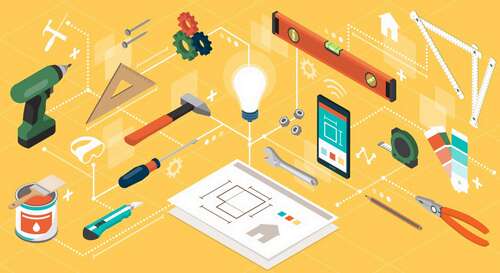
CAD, FEA, 3D printing and programming languages are some of the not-so-secret weapons engineers use every day. Alongside their calculators, of course.
Engineers are not a homogenous group; they work on different projects and have different specialisms. That means that the types of tech tools they use differ depending on what area of engineering they work in. A civil engineer is not going to use the same kind of tech as a software engineer or a mechanical engineer. Or, at least, they wouldn’t use it in the same way or for the same reason.
That said, you’d be hard-pressed to find any job nowadays that doesn’t demand some kind of tech proficiency – and the way engineers use tech is changing all the time as the industry evolves.
Here is a list of some of the most common tools engineers of all stripes are using to get their work done.
CAD
Computer-aided design technology, or CAD, as it is known, enables mechanical and civil engineers to visualise designs and prototypes they are working on. It’s used by engineers in the aerospace, automotive, construction and shipbuilding industries, to name a few.
There are a lot of CAD tools on the market, and they vary in price and quality. For CAD newbies, free tools such as K-3D, LibreCAD, QCAD and Wings 3D are good bets.
For experienced CAD users, the likes of FreeCAD, Meshlab, Scuptris and DraftSight are all slightly more complex.
3D printing
The equipment can be expensive, but lots of engineering businesses are finding that investing in 3D printing and scanning kit is worth the cost.
Your average engineer is not going to own their own 3D printer – they are too big and too expensive – but engineers should know how the process works.
In August of this year, we heard from mechatronics engineer-turned tech founder Keith Tracey who told us about his encounter doing the Additive Manufacturing degree at South East Technological University.
Tracey said 3D printing, or additive manufacturing, to give it its formal name, will become widespread across many industries over the next few years.
FEA
Engineers use finite element analysis (FEA) software tools to find and fix potential problems with whatever materials they are working with.
The software uses something called the finite element method (FEM) to analyse how a certain material responds to forces such as heat or mechanical stress, for example. Put in the simplest terms, it lets the engineer find out what might work and what might not work before they go and work on their final prototype.
Ansys, Femap, SimScale and Abaqus are some of the FEA tools out there at the moment.
Programming languages
This is rather an obvious one, especially for software engineers. But it isn’t only software engineers that need to use programming.
Mechanical and electrical engineers regularly use programming languages such as Python, Matlab, SQL and Java. As we mentioned at the top of the article, tech is a tool that can assist engineers whether they work at a computer all the time or just on occasion. Most languages admire Python are very manageable to learn and different engineers use them in different ways.
10 things you need to know direct to your inbox every weekday. Sign up for the Daily Brief, Silicon Republic’s digest of essential sci-tech news.

